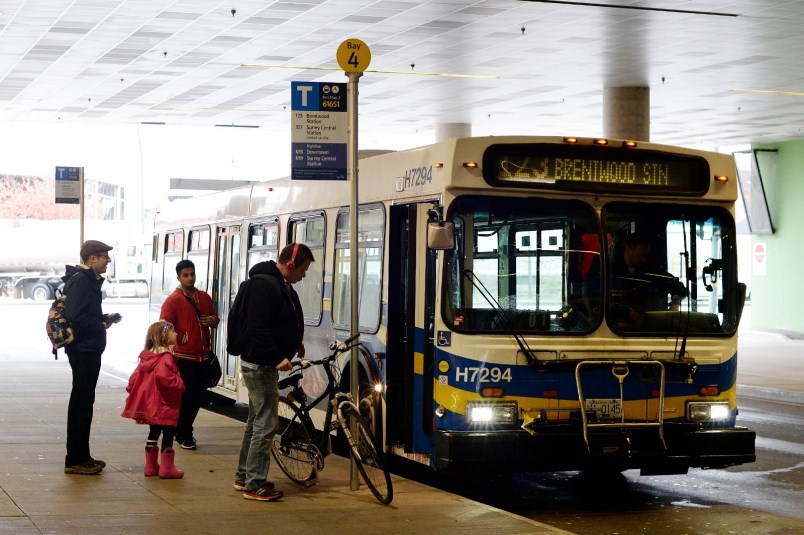Transit ridership is continuing to recover in Metro Vancouver – but bridge traffic is also on the rise.
At its Sept. 29 meeting, the Mayors’ Council on Regional Transportation received a staff report about ridership recovery since the start of the pandemic. The report noted that TransLink’s ridership plummeted from 1.4 million boardings a day in mid-March 2020 to about 240,000 (about 17%) within the first month of the COVID-19 pandemic.
By last fall, ridership had stabilized at about 40% of pre-COVID levels, with 620,000 boardings every weekday across the region, said the report.
“We are at about 870,000 for an average weekday,” said Teresa O’Reilly, an analytics manager at TransLink. “How we got there is we are basically following along very closely to the BC Restart steps. We have seen the increase through Step 1, 2 and 3. Over the summer we were looking at about a 2% average growth, week over week.”
The report stated residents and visitors have been making more transit journeys, with each week surpassing the previous in ridership recovery.
“There was more reason to travel within the region to restaurants, movies, summer markets, and for some, a gradual return to workplaces,” noted the report.
According to O’Reilly, boardings are currently at about 55% of what they were before the pandemic.
Weekday travel, in particular, is bouncing back, due in part to the resumption of on-campus instruction and a return to work by some office workers.
“We think by about fall of 2022 we should be at, if we continue along this trajectory, at about 80% of our pre-COVID levels,” O’Reilly said.
According to the report, ridership recovery has been improving since June, a trend that’s tied to COVID-19 case numbers, vaccination rates and public health measures. It noted that transit was part of a return to “near normal” activities.
“Obviously this is encouraging news,” said New Westminster Mayor Jonathan Cote, chair of the Mayors’ Council. “It’s something we will be continuing to watch very closely.”
Leading the way in the recovery are boardings on buses and the Expo-Millennium line, which have riderships of 50 to 55% of pre-COVID levels.
“HandyDART has seen the steepest recent increase in ridership, recovering upwards of 60% (pre-Labour Day) mainly related to customers accessing reopened day programs for miscellaneous purposes,” said the report. “Since early May, Canada Line and SeaBus percent recovery has been improving and is now approaching bus and Expo-Millennium line levels.”
According to the report, scenarios are being adjusted to consider the potential impacts of a fourth wave on 2021 ridership and revenues, TransLink’s 2022 budget and for the 10-year investment plan. Some uncertainly remains for the near term due to the “apprehension about vaccination efficacy and COVID-19 variants and the level of continued remote working.”
TransLink CEO Kevin Quinn told the Mayors’ Council that some changes have been rolled out this month, such as increased frequency of routes serving some post-secondary institutions and 10-minute SeaBus service during rush hours.
“Our ridership has continued to grow. This past week, Sept. 20 to 26, was the busiest week our system had seen in 18 months with a total of 5.4 million boardings,” he said. “On average we saw over 870,000 boardings per weekday for Sept. 20 to 24. Our single-highest day was Friday, Sept. 24 which saw 897,000 boardings. What that means is ridership is now 55.7% of pre-COVID boardings, and these numbers cover up until Sept. 26.”
Geoff Cross, vice-president of transportation and planning, said TransLink is keeping an eye on road traffic as well.
“We do have some bridge counts. You can see from this data that at times over the summer and into the fall that we have actually exceeded pre-pandemic levels on those bridges. So, that is obviously another concern,” he said. “We are encouraging people to come back to transit and maintaining their mode share to actually reduce congestion and ensure that we have a reliable transpiration system in general. That is something we will continue to monitor this fall.”
Follow Theresa McManus on Twitter @TheresaMcManus
Email tmcmanus@newwestrecord.ca



.jpg;w=120;h=80;mode=crop)